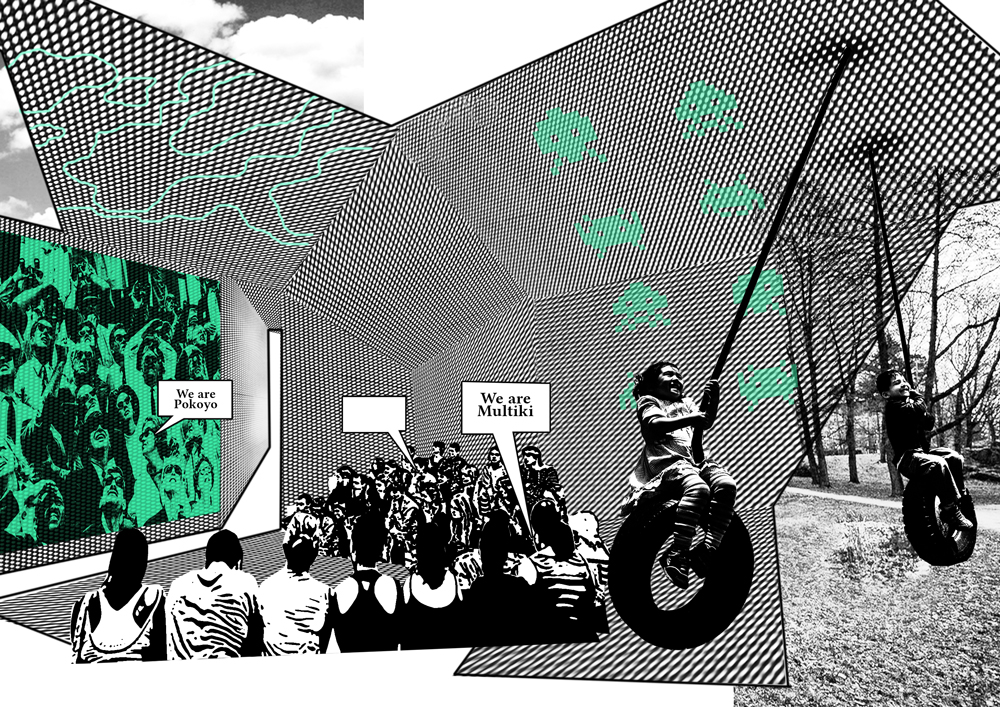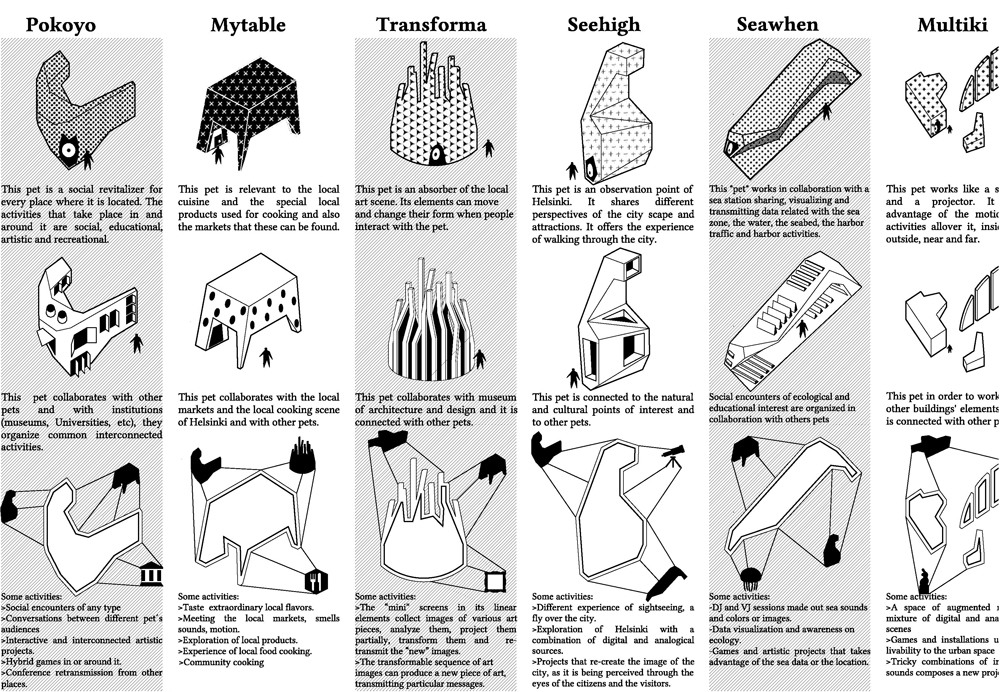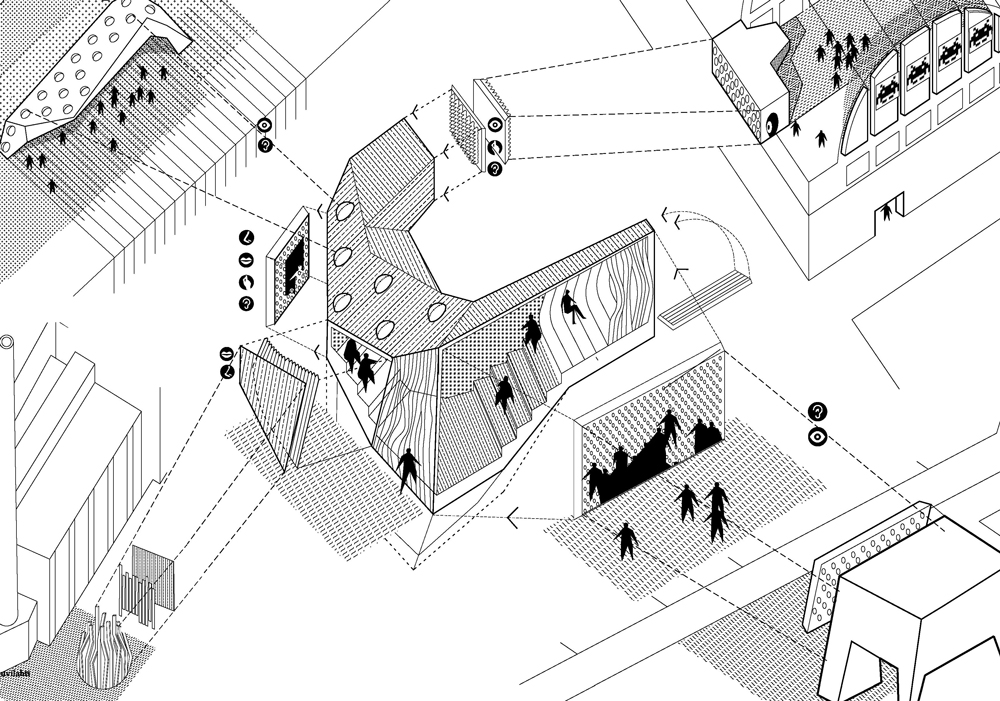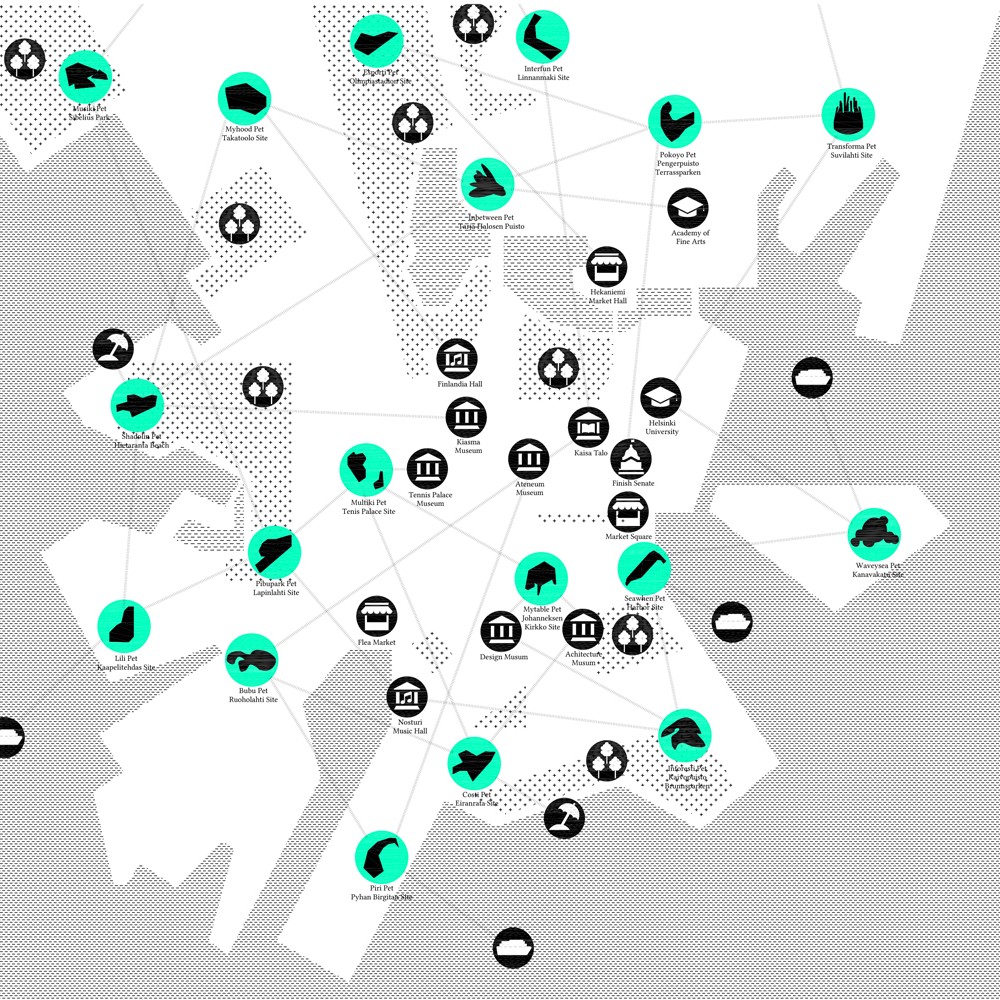Urban PETs
Year | 2015
Location | Helsinki (Finland)
Type | Next Helsinki Competition Longlisted
Use | Hybrid (Cultural, Urban, Digital)
Together with | P. Mantzou, Ch. Charistou & A. Matami.
PETs are a new kind of hybrid, digitalized, spatial, urban interface. They are, to be exact, urban Public Embedded Thresholds. PETs are hybrids of digital and architectural interfaces. They are fluid and transformable, they permit all sorts of connections without space or time delimitations and at the same time they allow the subjects to be enfolded in a common ground, a common place that is referred to its immediacy, to its space and time restrictions, to the collectivity and the social coexistence.

PETs are used as a system that can inhabit the public spaces, mostly open, but also enclosed, mostly grounded but also maritime and they can be used in order to host events related to the cultural, the social, the recreational and the political. They can be moved, combined, eliminated and they can be used in a specific relation to preexisting buildings, urban spaces, or landscapes, or as autonomous entities. They can be attached and related to the near and interconnected and expanded to the distant and they aim to host a multiplicity of actions and interactions that aren’t predefined.

PETs are multi-purpose and although they serve as an infrastructure for a disseminated, interconnected museum, they can do so much more. They aim to activate the public space of the town, augment its repercussion and spread around the city art projects, educational and recreational events, participatory and collective activities, social and political interactions. Their nature is hybrid- they are equally obsessed with the analogue and the digital- they are also systemic, nomadic, expansive, transformable, adjustable, dispersed, multiplied, combined, eliminable. Each PET is an autonomous entity and a part of a whole, of a system that allows different sites of the city to interconnect with this network of physical, accessible and yet amplifying and augmenting structures.
The PET network is a unique structure that converts the city and the experience of its urban public spaces in a vivid, collective, participatory, culturally-centered and leisure-oriented, animated, hybrid reality. It is a decentralized, dispersed system that distributes activities and events throughout the city instead of converging it all to a single megastructure.


The Helsinki ‘s specific characteristics can benefit from the urban PETs sprawl as they can shelter public acts in semi-open spaces offering shelter from weather impediments. On the other hand, Helsinki can foster the urban PETs and aliment them with its diverse and interesting environment, institutional and participatory activities and the emphasis on art and education matters, as well as to those of social interaction. Helsinki can provide PETs with multiples connections, not just the ones among them, but also with cultural and educational institutions and events, allowing information to flow and proliferate, converting the city to a hybrid, augmented but strenuously physical network of experiences, of situations, where all can participate and get involved. The Helsinki’s urban PETs are loyal to the city’s welfare and at the same time offer a unique prototype which adjusts hybrid realities to the urban public space.
